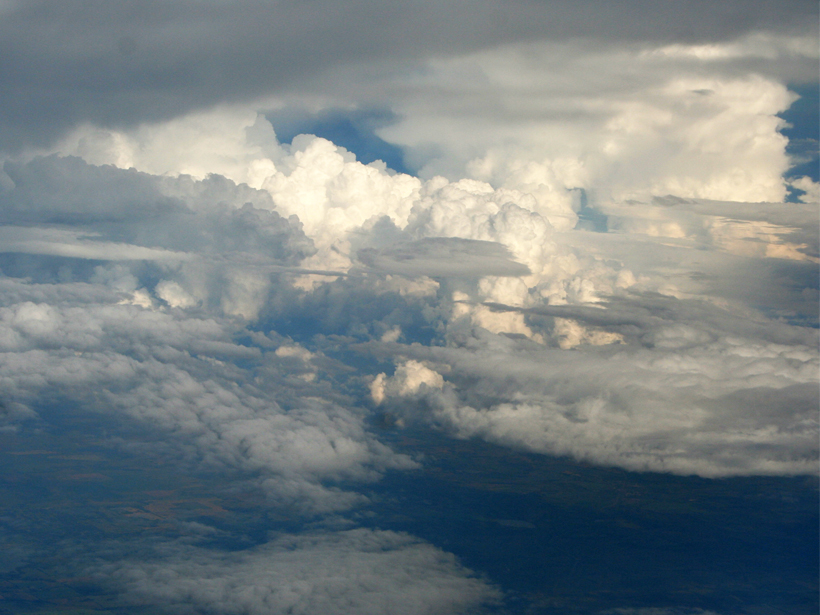A new study shows that aerosols have a strong impact on the reflectivity of the Earth's atmosphere, absorbing more solar radiation within the atmospheric layers than previously thought.
L. Strelich
Lily Strelich is a freelance writer and editor, covering Earth and space science research for Eos.org, Hakai Magazine, mental_floss, and others. She studied geology and German at Occidental College, assisted archaeology field work in Bulgaria, and now tackles science policy in Washington, D. C.
Convection Cycles, Atmosphere, and Ocean Work Symbiotically
Scientists review studies of the tropical Madden-Julian Oscillation to better frame its role in air-sea interactions.
Forecast Versus Reality: High-Resolution Weather Prediction
Researchers test the High-Resolution Rapid Refresh model with real-life observational data to evaluate forecast accuracy.
Aftershocks of Old Quakes Still Shake New Madrid Seismic Zone
Geodetic data show that earthquakes in 1450 and 1811–1812 may be responsible for present-day seismic activity in the region.
Improving Indian Summer Monsoon Prediction
A new study analyzes temperature and moisture variations in different layers of the atmosphere to improve forecasting of Indian summer monsoon precipitation patterns.
Climate Variability Across Scales Affects Ecosystems over Time
Given enough time, short-term variations in temperature, precipitation, and solar radiation influence the fluxes of water and carbon through ecosystems.
New Insights into the Complicated World of Tropical Convection
New study identifies key variables that move solar heat from the ocean to the troposphere in the tropics.
Low-Altitude Clouds Play an Important Role in a Changing Climate
Scientists uncover the mechanics behind tropical marine low cloud cover and its influence on models of anthropogenic climate change.
Sea Surface Temperatures on the Rise in the Caribbean
A 30-year climate analysis reveals an increase in sea surface temperatures in the Caribbean, the Gulf of Mexico, and the surrounding region.
Rising Temperatures Release Methane Locked in the Seabed
New research shows that when ice in the seafloor melts, single-cell organisms metabolize the methane released, preventing the greenhouse gas from reaching the atmosphere.










